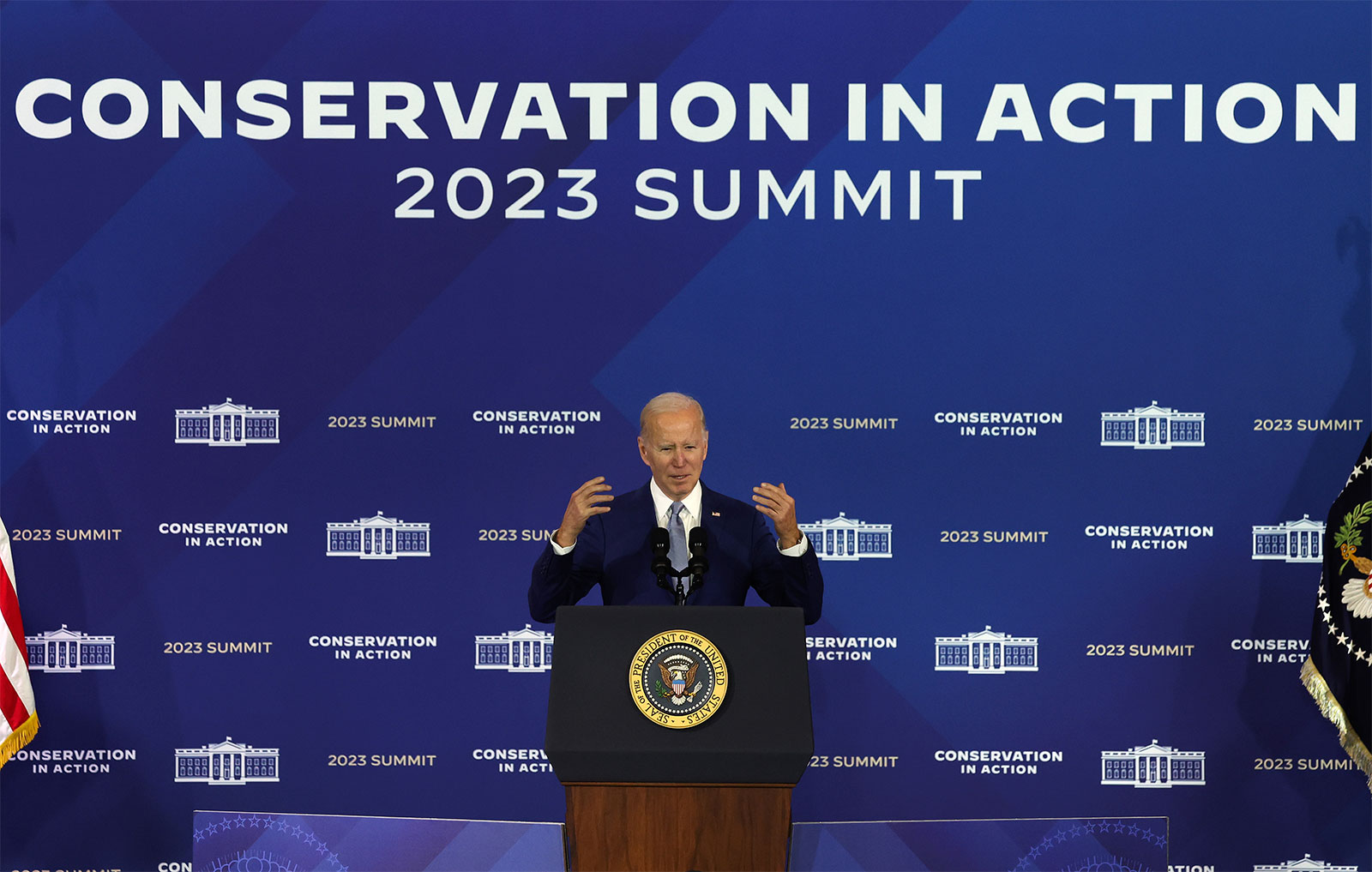To combat the biodiversity crisis, the Sierra Club supports establishing a national goal to conserve at least 30 percent of U.S. land, and 30 percent of U.S. ocean areas by 2030. Known as the 30×30 Agenda, this campaign has the potential to not only benefit wildlife, but improve outdoor equity and expand representation of historically marginalized groups on public lands. This three-part series explores the potential implications of such measures from locations across the country.
Growing up in the shadows of the Castner Range near El Paso, Texas, Ángel Peña saw the mountain range on his way home from elementary school every day. Where Mexican yellow poppies once bloomed every spring, he watched developments rise, with the high desert shrinking by almost half over the course of his lifetime.
Now the executive director of the nonprofit Nuestra Tierra Conservation Project, he says, “I grew up there on Dyer Street, near the range, and never really understood its importance until I became an adult, and until I became a parent.”
For decades, local activists like Peña have organized to try to protect the remaining ecosystem as a national monument. He’s now leading Nuestra Tierra’s “Protect Castner” campaign, which emphasizes both the landscape and the unique multiculturalism that comes with it.
The area is predominately Hispanic, and home to many immigrants. The community holds strong ties to their Chihuahuan landscape, which has defined many families on the Frontera since before the Castner Range was given to the U.S. military in 1939.
Under its ownership, citizens couldn’t visit the range, and residents feared the constant threat of the Department of Defense selling the land to the highest bidder. People like Peña argued that by protecting the nearby desert, the area could increase outdoor accessibility for this underprivileged community.
Hopes surged when, in Biden’s first few weeks in office, he signed an ambitious executive order announcing a national goal of protecting a third of the country’s lands and oceans by 2030. He also launched the Justice40 initiative, which aims to help marginalized communities through investment in climate-resilient infrastructure. The orders aimed to not only reduce climate impacts but strengthen cultural connections to wild places. This March, the Biden administration officially designated the Castner Range, along with Avi Kwa Ame in Nevada, as monuments.

The timing couldn’t be more urgent. Throughout the Southwest, landscapes are urbanizing, and finding places to get outside has become more difficult. “There is a huge lack of access to natural places, especially if you live in a bigger city,” said Skylar Begay, the director of tribal collaboration and outreach at Archaeology Southwest, a nonprofit preservation group based in Tucson, Arizona.
Begay also highlights the ways class and climate injustice intersect, explaining how people from low-income communities bear the brunt of climate change. “Economic status plays a big part in access to these places,” Begay adds, citing city greenery structures as an example. “A lot of green spaces are in affluent places, and in the poorest parts of the city where a lot of marginalized communities often live, there are not even sidewalks, trees along the road, or access to shade.”
Physical inequalities within urban spaces are compounded by the expense it can take to get outside into wilderness. “In a lot of places, the activities you do outdoors require a big investment in gear, like snowsports,” Begay explains.
For communities who have lived and cultivated on these lands for centuries, the lack of accessibility prevents them from preserving their cultural traditions and architecture. This is the case for the Great Bend of the Gila, a sprawling stretch of the Sonoran desert that extends through rural Arizona, creating uneven mountains between the cities of Yuma and Phoenix. The land holds thousands of historical petroglyphs, some of which date back as early as 1699.
Today, thirteen federally recognized tribes in the region have connections to the area, but as Phoenix expands, the desert is disappearing. Even though it is under federal stewardship, Begay says it needs to be better protected. “The Bureau of Land Management (BLM) manages its lands for multiple uses and sustained yield. There is a chance that these lands could be used for extraction and resource purposes,” Begay explains. Allowing mining in the area would cause the area to transition from something that “contributes to the climate crisis, rather than slows it down,” he adds.
Begay hopes to increase tribal involvement in how this land is managed. Advocates like the nonprofits Respect Great Bend and Archeology Southwest are working to influence BLM decisions about the land. Their hope is that the land will eventually also be designated as a national monument.
As local campaigns for monuments finally succeed, thinking about ways that cultural values can be included in land management is a top priority for these communities. In a region like El Paso, Texas, and its neighboring urban area, Ciudad Juarez, Mexico, the Castner Range symbolizes the coveted “American dream,” Peña says. As something you can see from across the southern border, he explains, “The mountain signified opportunity, an opportunity to put your family in a better place.”
While it took over 50 years to get the range protected, Peña says, “Now that we have a star on the map, we can begin to really tell the full story of our landscapes and our community.”
Scientists say we need to safeguard 30 percent of America’s land by 2030 to avoid mass extinction and climate catastrophe. The U.S. ranks as one of the top countries in the world when it comes to wilderness-quality land. Right now, roughly 12 percent of that is protected land — and the Sierra Club has played a role in saving nearly all of it. That means we have to protect more lands in the next decade than we did in the last century. With an ambitious agenda and strong local advocacy, we can still conserve much of these natural areas. Every acre counts.




